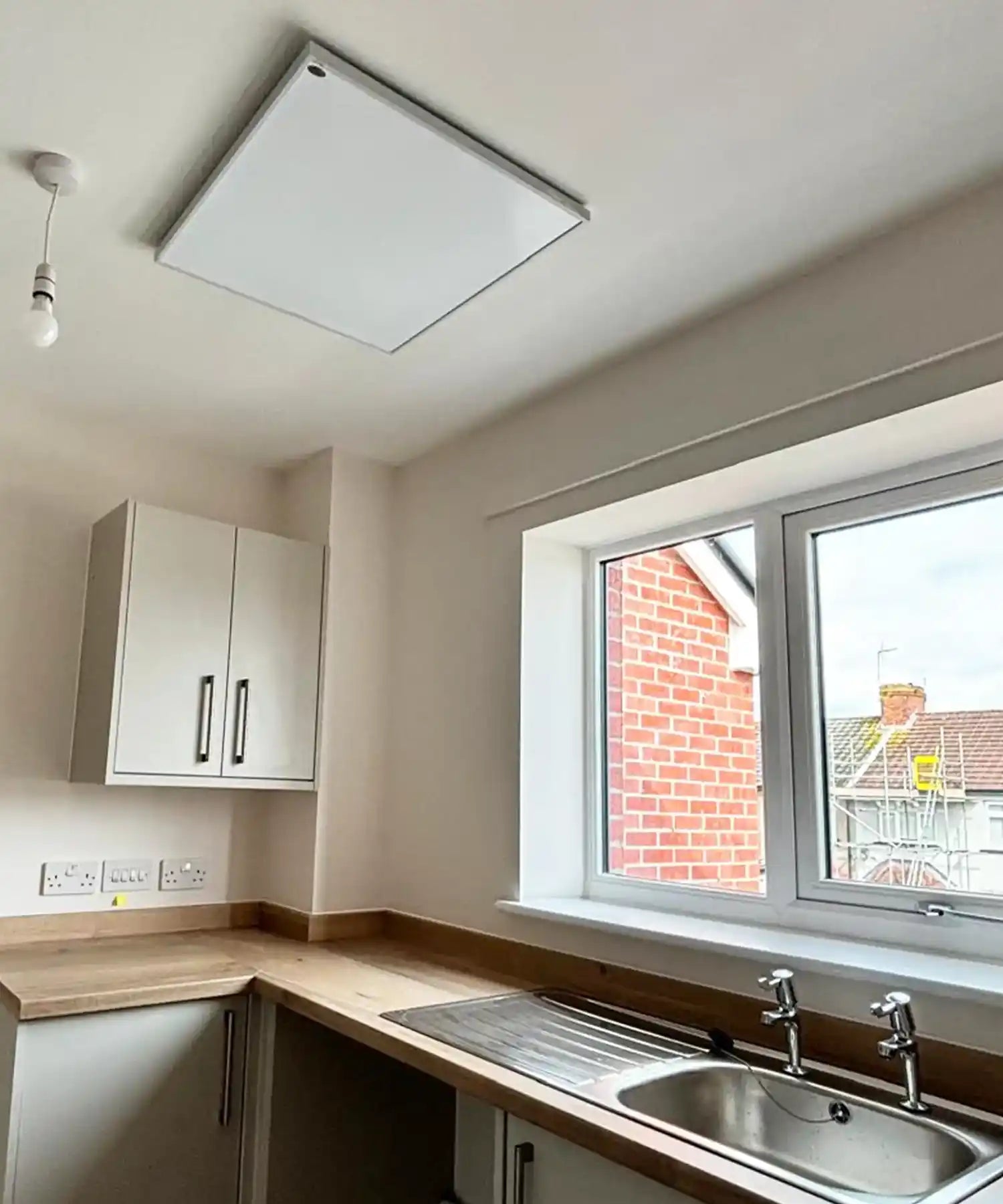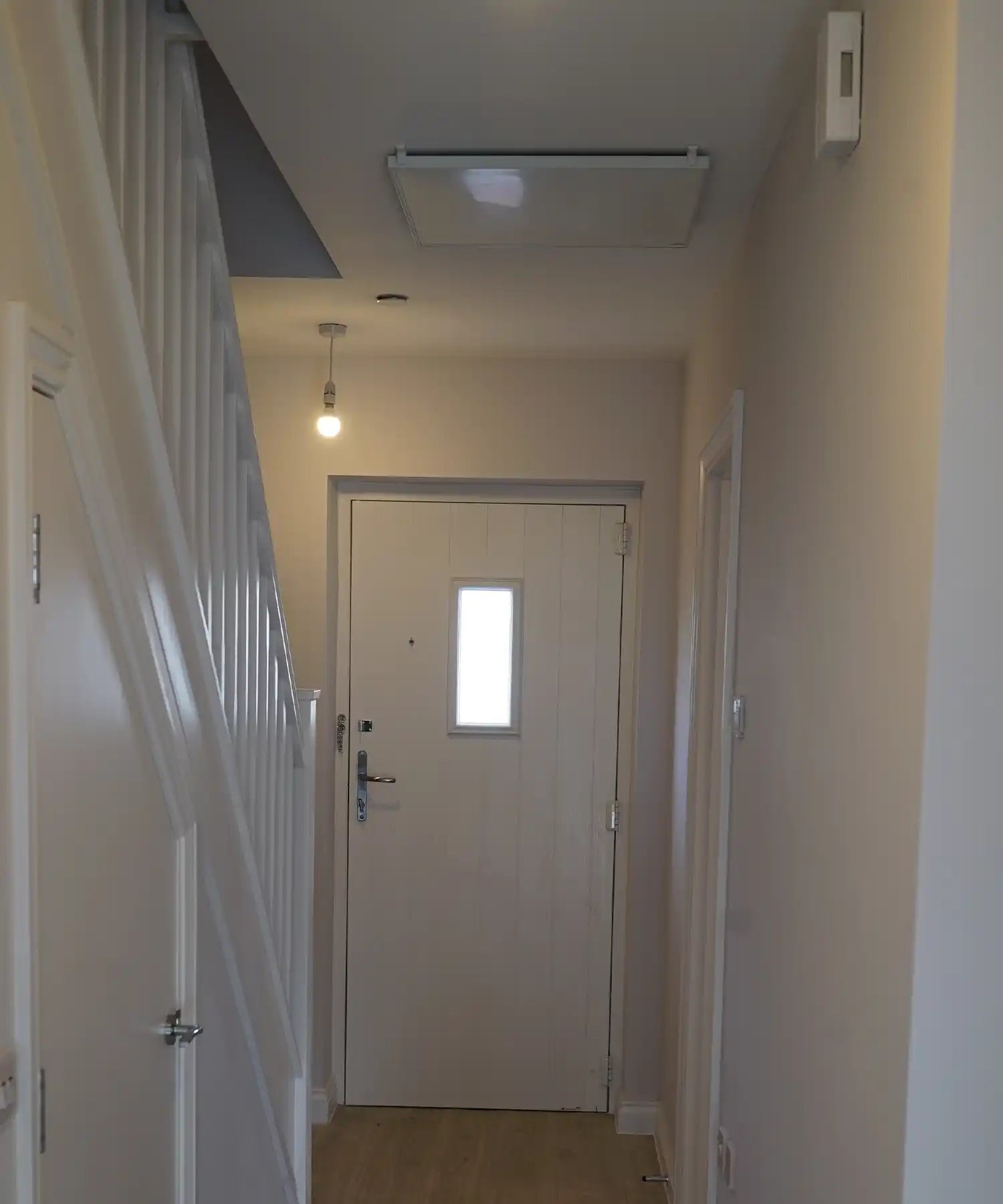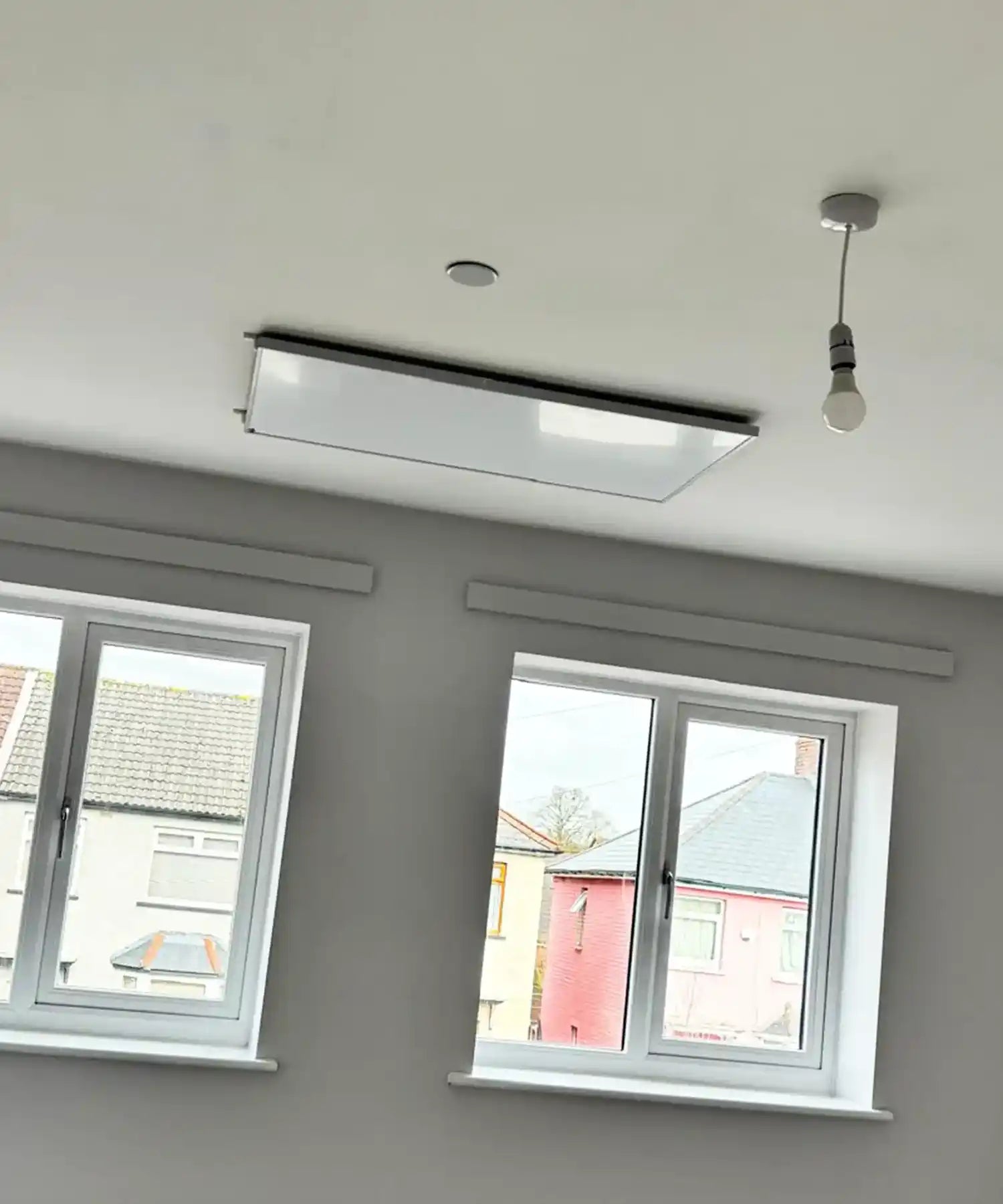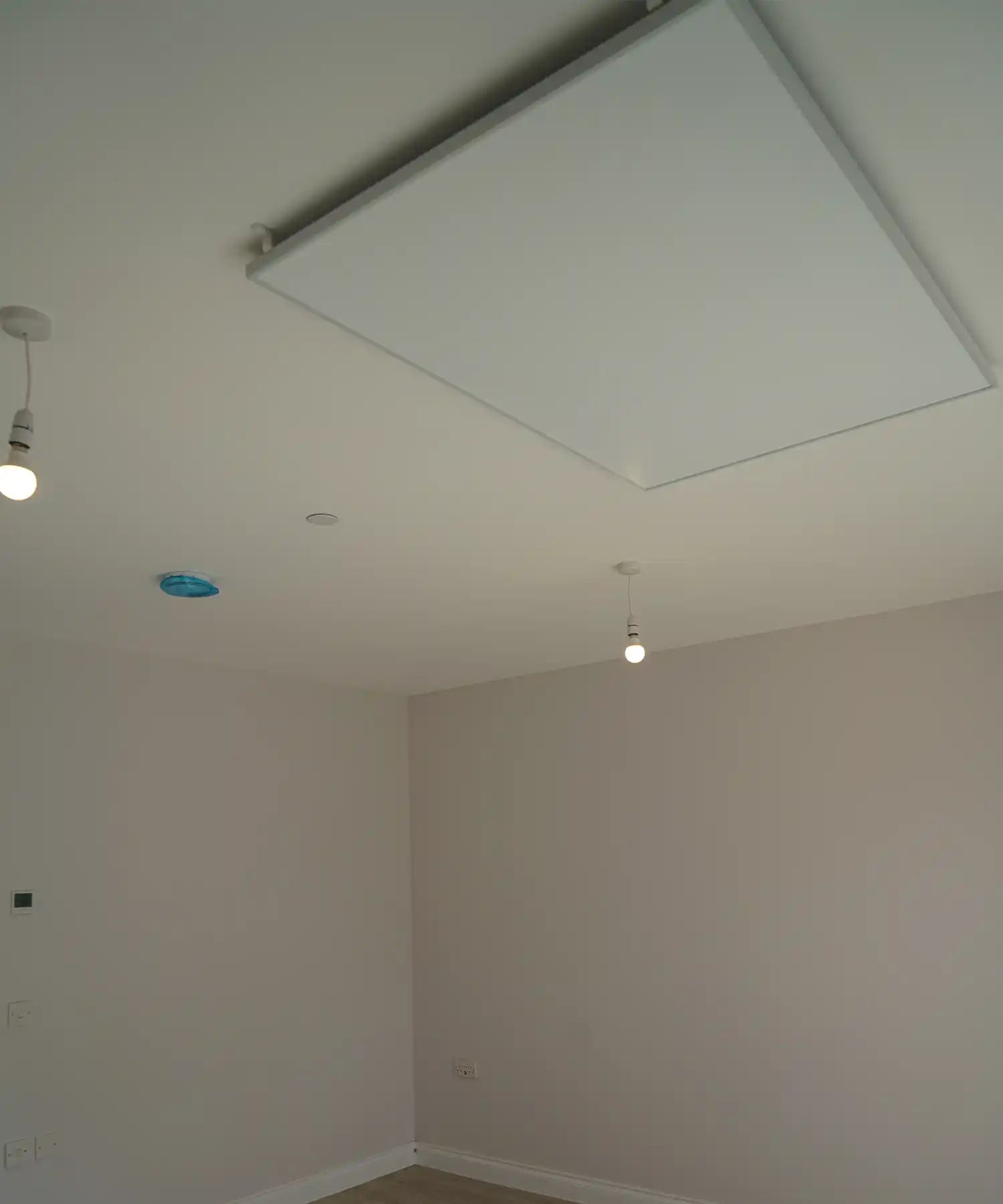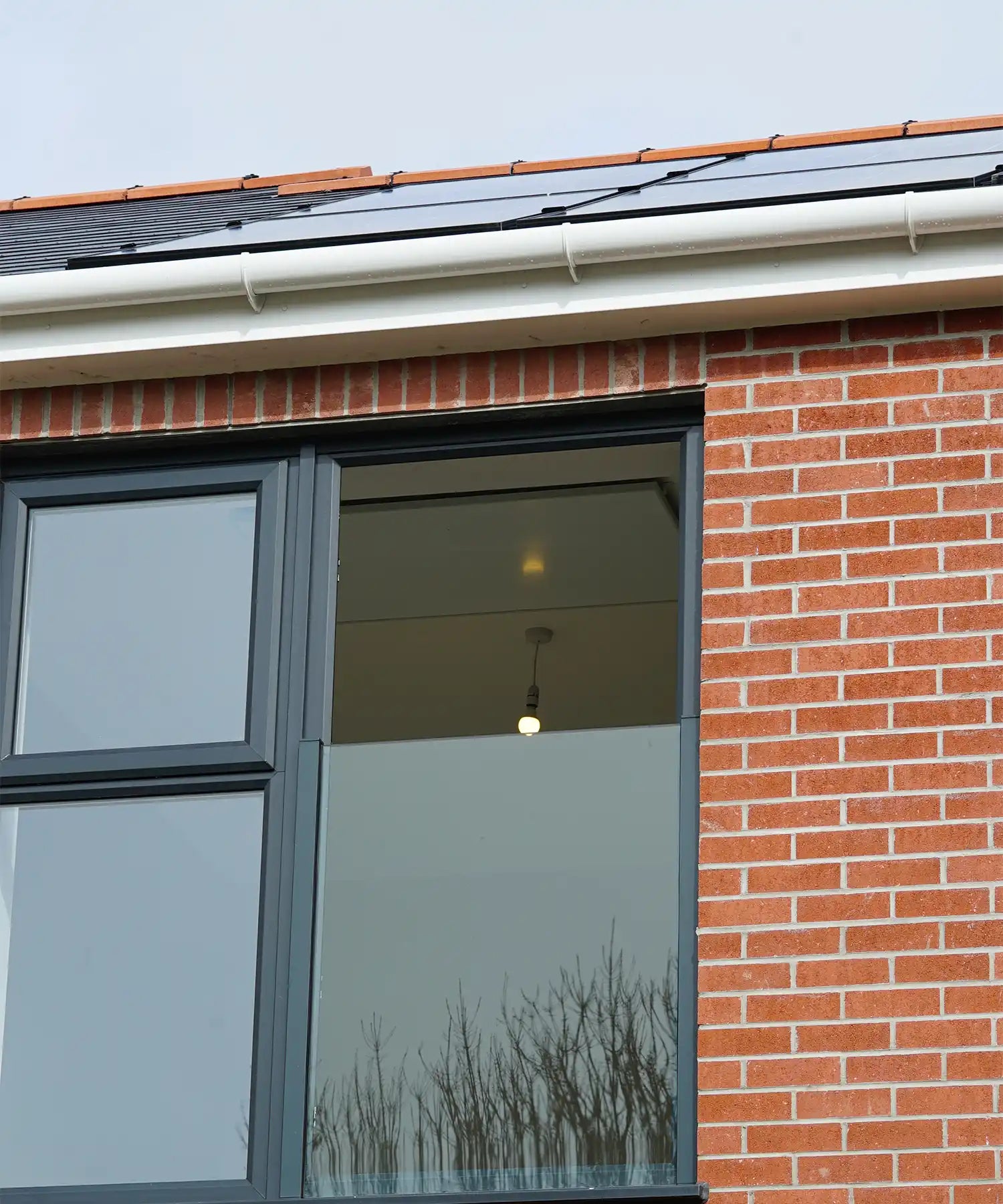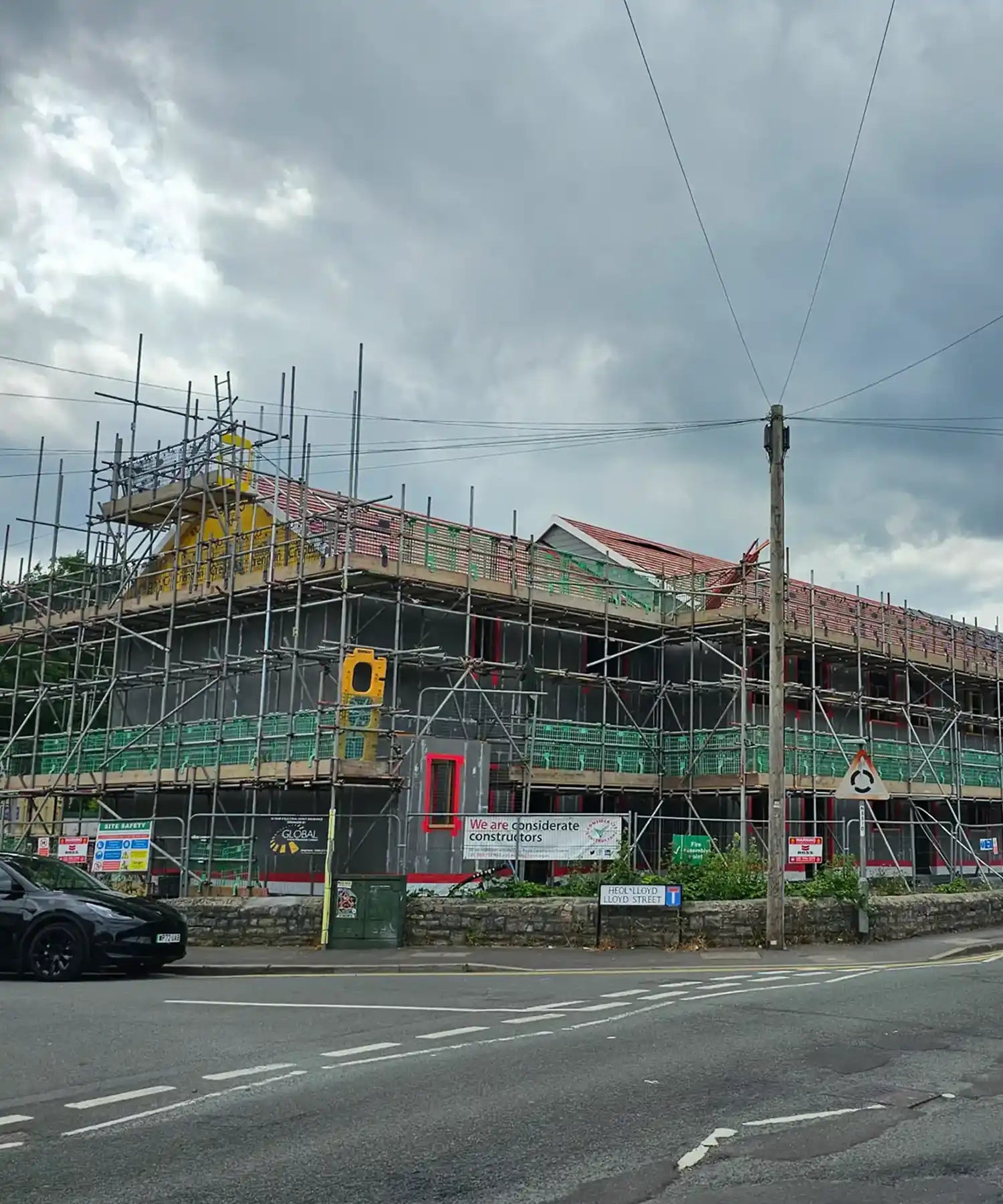INSTALLING INFRA-RED HEATING IN AN 8 PROPERTY DEVELOPMENT IN WALES
Facing the challenges of meeting sustainability targets whilst keeping capital and running costs to a minimum, developer Your Space, in partnership with Newport City Council, opted to install Kiasa Infrared Heating Panels in a new 8 property social housing development in Newport, South Wales. Installed directly on ceilings, energy-efficient, space-saving, Infra-Red heaters convert 98% of electricity into heat, significantly reducing energy bills and carbon footprint. At the same time they free-up wall space and living space and offer zero maintenance costs.
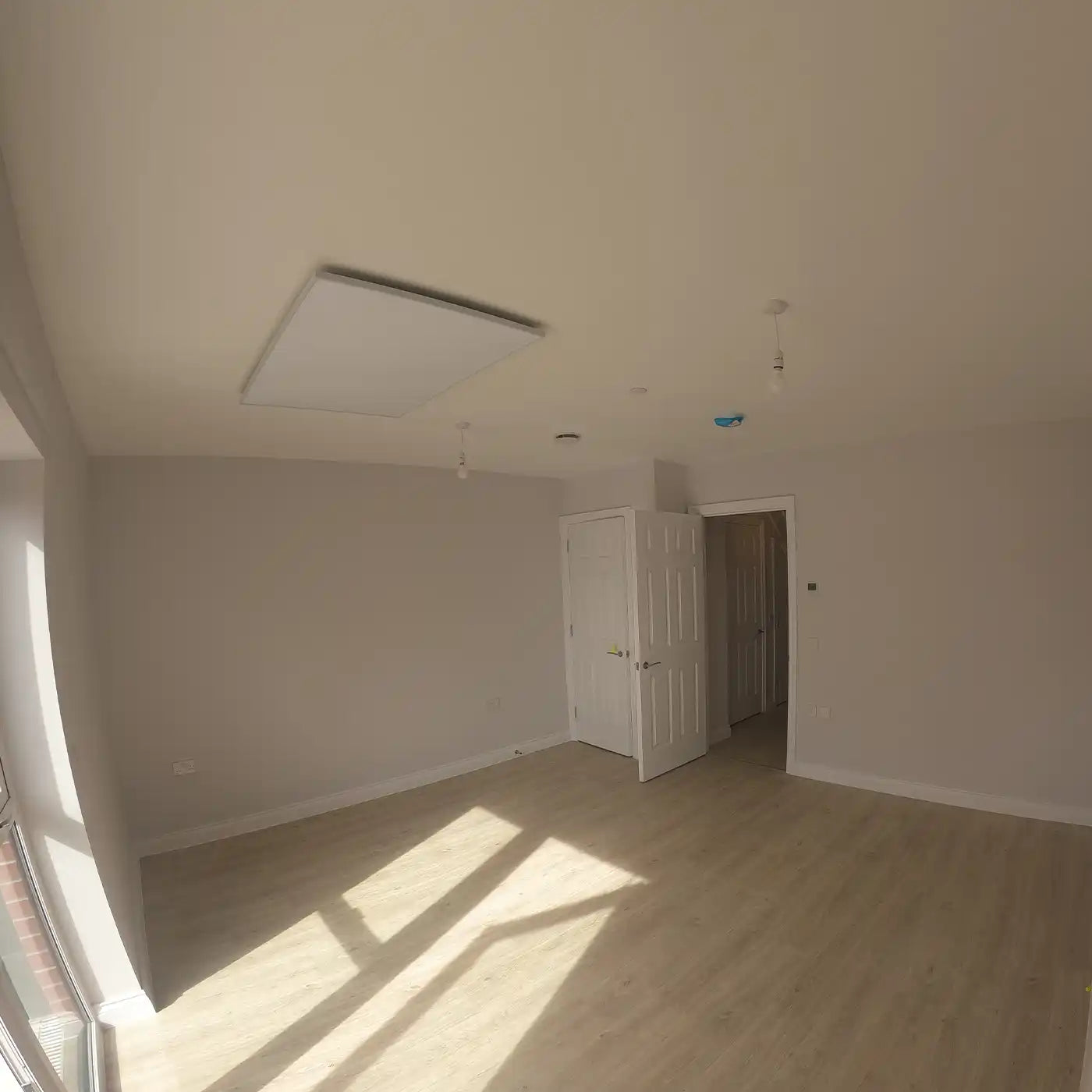
Location: Newport, Monmouthshire
Client: Newport City Council
Developer: Your Space
When developer Your Space was briefed by Newport City Council to build 8 new social housing properties in Newport, South Wales, they recommended the installation of Kiasa Infra-Red heating as a sustainable, cost-effective and space-saving alternative to traditional heating. Specifically the rationale for ‘going Infra-Red’ encompassed 5 main benefits:
Energy Efficiency:
Infra-red heaters convert nearly all of the consumed energy/electricity (98%) into heat, unlike convection heaters that only convert 50% - 70%. This means lower energy bills for the occupants of the building and reduced environmental impact for the project. With the long-term net zero policy in the UK, meaning that after 2035 gas boilers will no longer be allowed to be installed, finding the most energy efficient electric heating was paramount.
Space Saving:
Because the panels were installed unobtrusively onto the ceilings, they freed-up wall space and gave a pleasingly aesthetic design to the. project.
Low Maintenance:
As opposed to boilers which require annual servicing, ‘plug-and-play’ Infra-Red heaters are straightforward to run and have no maintenance requirements. This can reduce maintenance cost by between £80-£150 per year.
User-friendly and smart controls:
Infra-Red further saves money by affording the facility for home-owners to ‘heat zones’. A mobile App controls each and every panel independently and individually. This allows programming and zoning to heat only the spaces residents need at the times they require. Infra-Red panels are totally programmable.
Reduced Carbon Footprint:
Research shows that Infra-Red panels and bars are the most sustainable heating technology available. By adopting energy-efficient heating solutions like Infra-Red panels, local authorities can contribute to the reduction of carbon emissions and combat climate change at a community level.
IMPLEMENTATION OF KIASA INFRA-RED PANELS
For the Newport project Your Space initiated a phased rollout of Infra-Red heating panels across the development which integrated:
Planning and Assessing:
Your Space consulted with Kiasa’s team to develop site assessments based on architectural drawings to determine how much wattage per square meter would be required per room, as well as optimum placement of the heater panels. Each unit was assessed individually to figure out how many panels would be needed for the tenants to be comfortable.
Installation:
Kiasa shared it knowledge with experienced contractors to install panels and ensure that every safety standard was met.
Education and Training:
Additional training was provided to share with tradesmen how Infra-Red panels work and should be installed and connected.
Customer onboarding and support:
Most importantly, upon moving in, residents were informed and supported with regard to how to operate panels in a smart way for optimum efficiency and manage their heating requirements using the App.
Monitoring and Feedback:
The project also provided the implementation of a monitoring system to track energy consumption, resident feedback, and overall performance of the project scope.
In conclusion
The successful implementation of Infra-Red panels in this council housing project presents a big impact and a compelling blueprint for eco-friendly and efficient heating. The project also called for solar energy (not in this case provided by Kiasa) and created a synergy that leveraged significant cost savings and environmental advantages.
By highlighting the energy efficiency advantages, cost savings, and overall well-being/health benefits, Newport City Council is leading the way in addressing heating challenges across the UK to set an example for sustainable housing initiatives.

